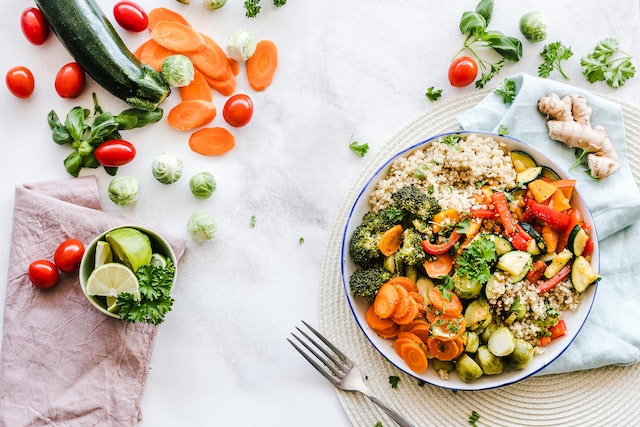
The Art of Meal Prepping: Save Time and Money
October 25, 2023
In today’s fast-paced world, the daily grind often leaves us with little time or energy to prepare healthy, home-cooked meals. The result? We turn to convenient yet often expensive options, such as takeout and ready-made frozen dinners. However, there’s a game-changing practice that can help you regain control of your diet and your budget: meal prepping. In this article, we’ll explore the art of meal prepping, which can save you both time and money while improving your overall health.
What Is Meal Prepping?
Meal prepping is the practice of planning, preparing, and portioning your meals in advance, typically for the week ahead. It can be as simple or as elaborate as you prefer, and it offers several advantages:
1. Time Efficiency: Meal prepping reduces the time you spend cooking and cleaning up on a daily basis. By dedicating a few hours each week to preparing your meals, you can free up valuable time during busy workdays.
2. Cost Savings: By buying ingredients in bulk and planning your meals strategically, you can save money on groceries. You’ll be less inclined to dine out or order takeout, which can be costly in the long run.
3. Health Benefits: Meal prepping allows you to take control of your food choices, ensuring that your meals are nutritious and well-balanced. It also helps you avoid the temptation of unhealthy, high-calorie fast food options.
4. Reduced Food Waste: When you plan your meals, you’re less likely to let ingredients go to waste. Meal prepping encourages you to use what you have, reducing food waste and saving money.
The Basics of Meal Prepping
Now, let’s delve into the basics of meal prepping:
1. Plan Your Meals
Start by creating a meal plan for the week. Consider your dietary goals and any dietary restrictions you may have. Plan breakfast, lunch, and dinner, and don’t forget to include snacks. Think about what ingredients you’ll need and how you can use leftovers creatively.
2. Make a Shopping List
With your meal plan in hand, create a detailed shopping list. Organize it by category to make your grocery shopping efficient. Stick to your list to avoid unnecessary purchases.
3. Invest in Storage Containers
Invest in a set of high-quality storage containers. Having a variety of container sizes is essential to accommodate different dishes and portion sizes. Opt for reusable, eco-friendly containers to reduce waste.
4. Cook in Batches
Dedicate a few hours, typically on a weekend or whenever you have some free time, to cook in batches. Prepare large quantities of proteins, grains, vegetables, and other components of your meals. This initial effort will save you time during the week.
5. Portion Your Meals
As you cook, portion your meals into the storage containers. Be mindful of portion sizes to ensure your meals are balanced and nutritionally appropriate. Label the containers with the date to keep track of freshness.
6. Refrigerate or Freeze
Refrigerate the meals you’ll consume within the next few days and freeze the rest. This allows you to have a variety of meals ready to go. When freezing, consider vacuum-sealing your containers to prevent freezer burn.
7. Rotate and Reheat
During the week, rotate your meals from the freezer to the refrigerator as needed. When you’re ready to eat, simply reheat your prepped meal, and you’ll have a hot, home-cooked dish in minutes.
Meal Prep Ideas
Here are a few meal prep ideas to get you started:
1. Breakfast Burritos: Prepare a batch of breakfast burritos filled with scrambled eggs, vegetables, and a protein source like lean turkey or chicken sausage. Wrap them in foil, freeze, and reheat in the oven or microwave.
2. Mason Jar Salads: Assemble salads in mason jars with dressing at the bottom and greens at the top to keep ingredients fresh. When it’s time to eat, shake and enjoy.
3. One-Pan Dinners: Sheet pan or one-pot dinners are perfect for meal prepping. Roast a variety of vegetables and proteins on one pan, such as chicken and assorted veggies, for a balanced meal.
4. Rice and Grain Bowls: Cook a large batch of rice, quinoa, or other grains. Combine them with your choice of proteins, veggies, and sauces. Divide into containers for easy and satisfying lunches.
5. Slow Cooker Meals: Utilize a slow cooker to prepare hearty dishes like chili, stews, and soups. These meals often yield leftovers, making them perfect for meal prepping.
6. Snack Packs: Create snack packs with your favorite fruits, vegetables, and a source of protein, such as nuts or cheese. Having healthy snacks on hand can prevent impulsive and less nutritious choices.
The Art of Adaptation
Meal prepping is not about rigidly sticking to a plan but about creating a flexible structure that suits your lifestyle. Here are a few tips for success:
1. Stay Organized: Use a meal prep calendar or app to track your meals, plan ahead, and avoid overbuying groceries.
2. Mix It Up: Variety is key to prevent meal prep fatigue. Rotate your recipes and try new dishes regularly.
3. Prep Essentials: Keep a stash of basic ingredients, such as cooked chicken, grains, and chopped vegetables, in your fridge. This makes assembling meals even quicker.
4. Be Realistic: Be aware of your time constraints and adapt your meal prep schedule to fit your availability. Even prepping for a few days can make a significant difference.
5. Embrace Leftovers: Leftovers are your meal prep allies. Plan for meals that can be easily rep
